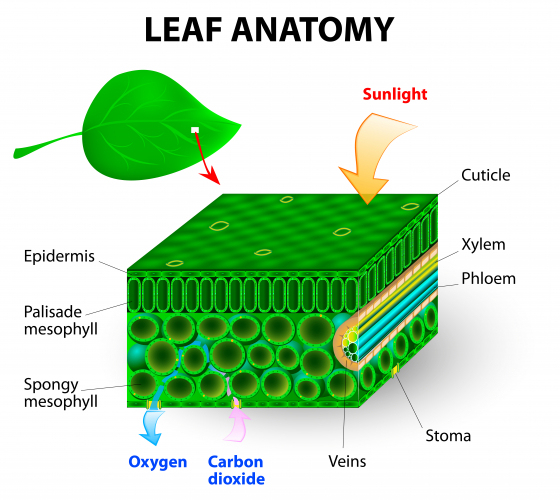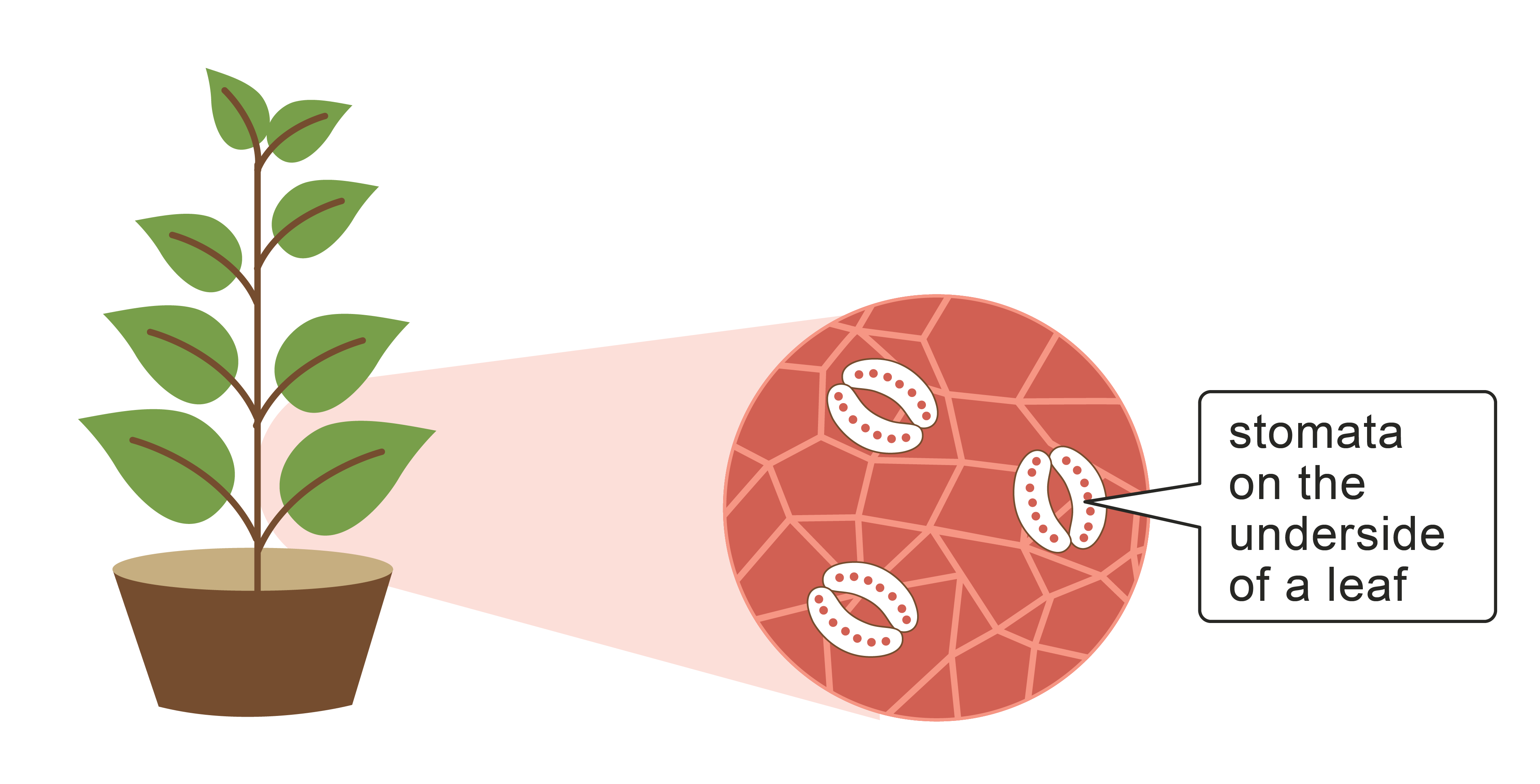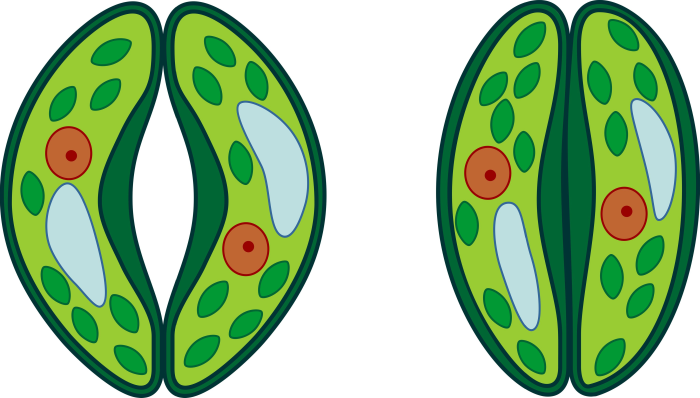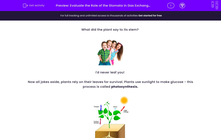What did the plant say to its stem?

I'd never leaf you!
Now all jokes aside, plants rely on their leaves for survival. Plants use sunlight to make glucose - this process is called photosynthesis.
.jpg)
Plants have different structures that help them to make glucose.
One of the main structures is the leaf. A leaf has many adaptations that allow it to carry out photosynthesis effectively. Let's look at these in more detail below:

The leaf is quite a complicated organ when looked at under a microscope, as you can see from the picture above!
In order to photosynthesise, plants need carbon dioxide and water. These reactants are essential to make glucose. The glucose made is essential for growth and respiration. Plants also release oxygen which is essential for us to stay alive!
So how do plants get this carbon dioxide and water?
On the underside of the leaf called the lower epidermis layer, are small holes or pores called stomata. These pores (stoma for one pore) allow carbon dioxide to diffuse into the leaf from the environment.

Stomata have guard cells on either side of them, to control their size. The guard cells can fill up with water and swell up - they become turgid. When this happens the stomata will become smaller or close completely.
If the guard cells lose water, they shrink or become flaccid and the opposite happens - the stomata open.

Stomata are open during the day and closed at night. Why might that be?
Well, at night there's no sunlight, so plants can't photosynthesise, so there's no need for the stomata to be open. During the day, the carbon dioxide is able to enter the leaf to be used for photosynthesis.
When the stomata open to allow carbon dioxide in, water will evaporate and diffuse out of the stomata. It's a bit like opening the front door on a very cold day to let a guest in - in doing so the heat from your house escapes - it can't be helped! This is known as transpiration.
Having the stomata closed at night prevents further water loss. Remember that the plant needs water for photosynthesis, so it wants to hold onto it as much as possible!
Although transpiration is inevitable, it's also quite useful! As the water vapour is lost from the leaf, it is replaced by more water drawn up from the soil. This stream of water helps the plant to remain cool and allows minerals to be drawn up the plant along with the water. It also gives plants their structure and support.
In the following activity, we will evaluate the role of the stomata in gas exchange.







